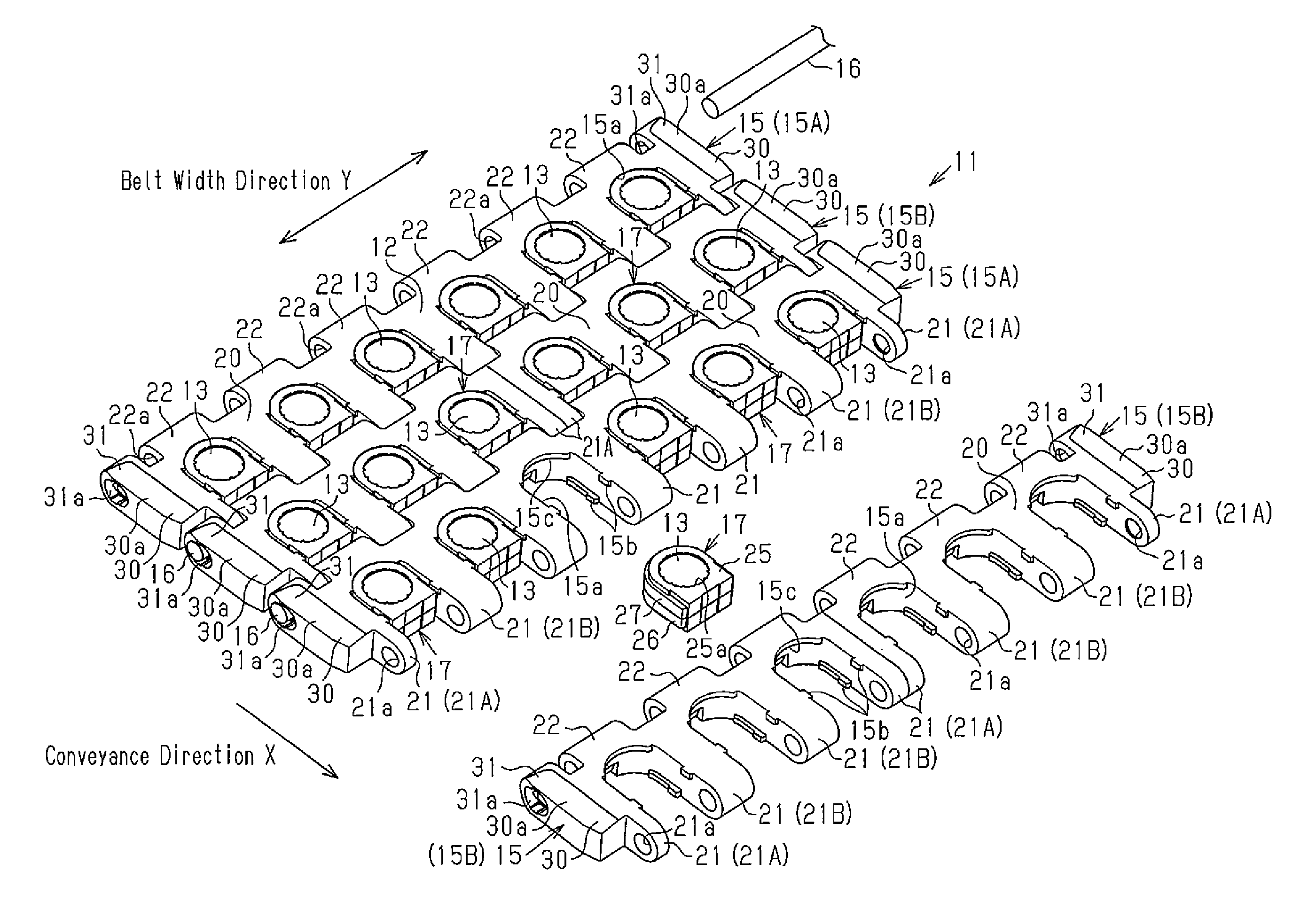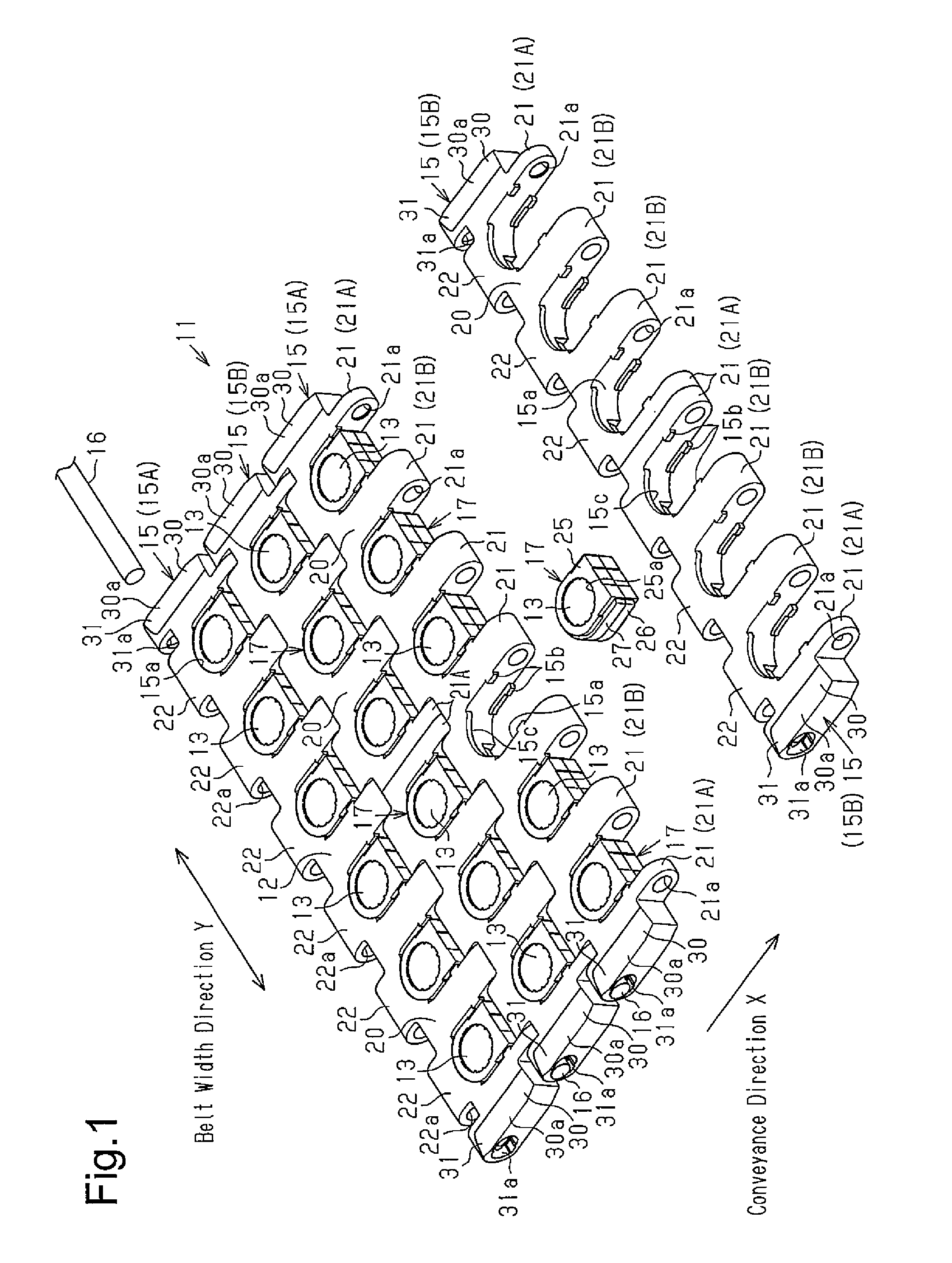Conveyor belt and belt constituent members
a technology of conveyor belts and constituent parts, which is applied in the direction of conveyors, transportation and packaging, etc., can solve the problems of ball unit detachment risk b>86
- Summary
- Abstract
- Description
- Claims
- Application Information
AI Technical Summary
Benefits of technology
Problems solved by technology
Method used
Image
Examples
first embodiment
[0046]A first embodiment of this invention is described below based on FIGS. 1 to 3(b). In the first embodiment, a conveyor belt 11 of this invention is embodied in a conveyor belt with balls. In the following description of the conveyor belt 11, a direction in which an item is conveyed is called a conveyance direction X and a direction crossing the conveyance direction X is called a belt width direction Y. The longitudinal direction of the belt is parallel to the conveyance direction X. FIG. 1 shows only a part of the conveyor belt.
[0047]The conveyor belt 11 shown in FIG. 1 is configured as an endless belt with opposite ends (not shown in the drawings) of the conveyor belt 11 in the longitudinal direction of the belt coupled to each other. The conveyor belt 11 is wrapped around multiple sprockets (not shown in the drawings) while the opposite ends of the conveyor belt 11 in the longitudinal direction are in meshing engagement with the corresponding sprockets. When a motor as a powe...
second embodiment
[0076]A conveyor belt of a second embodiment is described next by referring to FIGS. 4(a) and 4(b).
[0077]In the first embodiment, the restricting part 31 protrudes in the same direction as the second hinge part 22. In the second embodiment, a restricting part 41 protrudes in the same direction as the first hinge part 21A.
[0078]As shown in FIGS. 4(a) and 4(b), a bulging part 40 is formed at an end portion of the conveyor belt 11 in the width direction. The bulging part 40 is formed at a lateral portion of the first hinge part 21A. The bulging part 40 is provided with a restricting part 41 protruding in the conveyance direction X. The restricting part 41 protrudes further than the tip of the first hinge part 21A toward a downstream side. The bulging part 40 is provided with a rectangular cutout 42 opened toward an upstream side. The cutout 42 receives the restricting part 41 of the chain link 15 adjacent to the bulging part 40. The bulging part 40 has an end surface 40b spaced by a sl...
PUM
 Login to View More
Login to View More Abstract
Description
Claims
Application Information
 Login to View More
Login to View More - R&D
- Intellectual Property
- Life Sciences
- Materials
- Tech Scout
- Unparalleled Data Quality
- Higher Quality Content
- 60% Fewer Hallucinations
Browse by: Latest US Patents, China's latest patents, Technical Efficacy Thesaurus, Application Domain, Technology Topic, Popular Technical Reports.
© 2025 PatSnap. All rights reserved.Legal|Privacy policy|Modern Slavery Act Transparency Statement|Sitemap|About US| Contact US: help@patsnap.com



